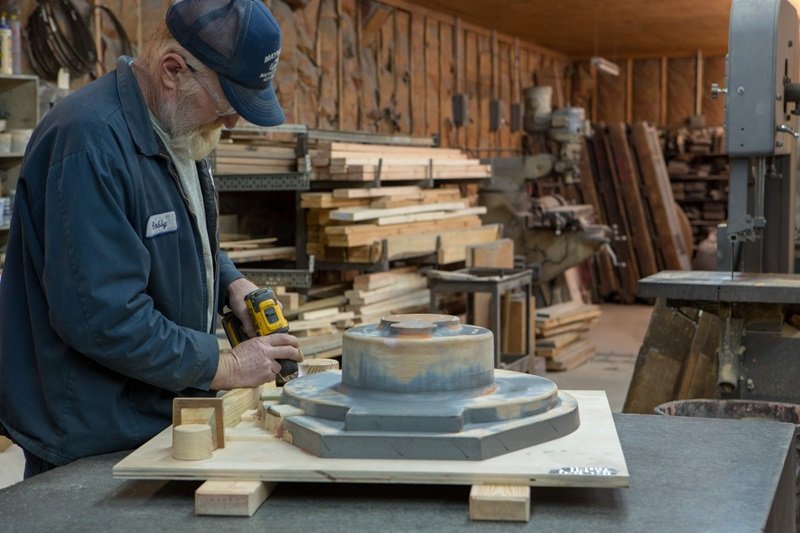Pattern making is a craft that combines creativity, precision, and technical knowledge to produce templates used in various manufacturing processes. Pattern makers are the skilled artisans behind this crucial task, creating the foundational models for everything from high fashion garments to complex metal castings. This article explores the intricate world of pattern makers, highlighting their importance, processes, and the diverse materials they work with.
The Role of Pattern Makers
Pattern makers are integral to many industries, including fashion, manufacturing, automotive, aerospace, and foundry work. They create patterns or templates that guide the production of final products. These patterns must be highly accurate and detailed to ensure that the end products meet specific design and functional requirements.
In the fashion industry, pattern makers transform designers’ sketches into precise templates that dictate how fabric is cut and assembled. This process involves drafting, scaling, and adjusting patterns to fit various sizes and styles, ensuring each piece aligns with the designer’s vision.
In manufacturing, pattern makers produce models for casting and molding processes. These can be wooden, aluminum, birch plywood, or thermocol patterns, depending on the specific requirements of the production process. The accuracy and durability of these patterns are essential for producing high-quality parts consistently.
Types of Patterns and Materials
- Wooden Patterns: Wooden patterns are commonly used in the foundry industry to create molds for metal casting. They are made from durable woods like pine, mahogany, and cherry. Wooden patterns are favored for their ease of modification and repair, making them ideal for prototyping and low-volume production. The process of crafting wooden patterns involves cutting, shaping, assembling, and finishing the wood to precise specifications.
- Aluminum Patterns: Aluminum patterns are known for their strength, lightweight nature, and resistance to wear and tear. These patterns are particularly useful in high-volume production environments where durability and longevity are crucial. The use of aluminum allows for repeated use without significant degradation, ensuring consistent quality over time.
- Birch Plywood Patterns: Birch plywood patterns offer a balance of strength and flexibility. They are used in various applications, from furniture design to architectural models. Birch plywood is easy to shape and provides a stable and durable material for creating detailed and accurate patterns.
- Thermocol Patterns: Thermocol, or expanded polystyrene, is used to make lightweight and cost-effective patterns. These patterns are ideal for prototyping and low-volume production runs. Thermocol patterns are easy to shape and can be quickly produced, making them suitable for complex designs that require rapid development.
- Die Casting Patterns: Die casting patterns are used in the die casting process to shape molten metal into specific forms. Made from robust materials, these patterns ensure high accuracy and consistency in producing complex and detailed metal parts. Die casting patterns are essential in industries such as automotive and aerospace, where precision and reliability are paramount.
The Pattern Making Process
The process of pattern making involves several stages, each requiring meticulous attention to detail and a deep understanding of materials and techniques. Here is a step-by-step overview of the pattern making process:
- Design and Planning: The first step is to study the design specifications and create a plan for the pattern. This involves understanding the functional requirements of the final product and determining the best materials and techniques to use.
- Material Selection: The appropriate material is selected based on the size, complexity, and requirements of the pattern. Factors such as durability, ease of shaping, and cost are considered in this decision.
- Cutting and Shaping: The pattern maker cuts the material into the rough shape of the pattern. This step involves using various tools and techniques, from traditional woodworking tools to modern CNC (Computer Numerical Control) machines for precise cutting and shaping.
- Assembly: For complex patterns, multiple pieces are assembled together. This requires careful alignment and joining techniques to ensure the final pattern is cohesive and accurate.
- Finishing: The pattern is smoothed and finished to achieve the correct surface texture and dimensions. This may involve sanding, sealing, and applying coatings to protect the material and enhance its durability.
- Quality Control: The completed pattern undergoes rigorous quality checks to ensure it meets all design specifications and tolerances. Any discrepancies are corrected before the pattern is approved for use.
The Importance of Pattern Makers
Pattern makers play a crucial role in ensuring the success of the manufacturing process. Their work provides the foundation for producing high-quality, reliable, and consistent products. The benefits of skilled pattern makers include:
- Precision and Accuracy: Pattern makers ensure that each template is crafted with meticulous precision, reducing errors and ensuring consistent quality.
- Cost Efficiency: Accurate patterns minimize material waste and reduce the need for corrections, leading to significant cost savings.
- Versatility: Pattern makers can work with various materials and techniques, providing solutions tailored to specific industry needs.
- Innovation and Customization: Pattern makers enable the creation of unique and complex designs, fostering innovation and allowing for customized solutions.
- Time Savings: Efficient pattern making processes streamline production, reducing the time needed for adjustments and modifications.
Conclusion
Pattern makers are the unsung heroes of many industries, combining artistic talent with technical expertise to create the templates that drive production. Their work ensures that designs are accurately translated into high-quality products, supporting innovation and efficiency across various fields. Whether working with wood, aluminum, birch plywood, thermocol, or other materials, pattern makers are essential in turning creative ideas into tangible realities. Their contribution is fundamental to the success and advancement of manufacturing processes worldwide.











Find Us on Socials